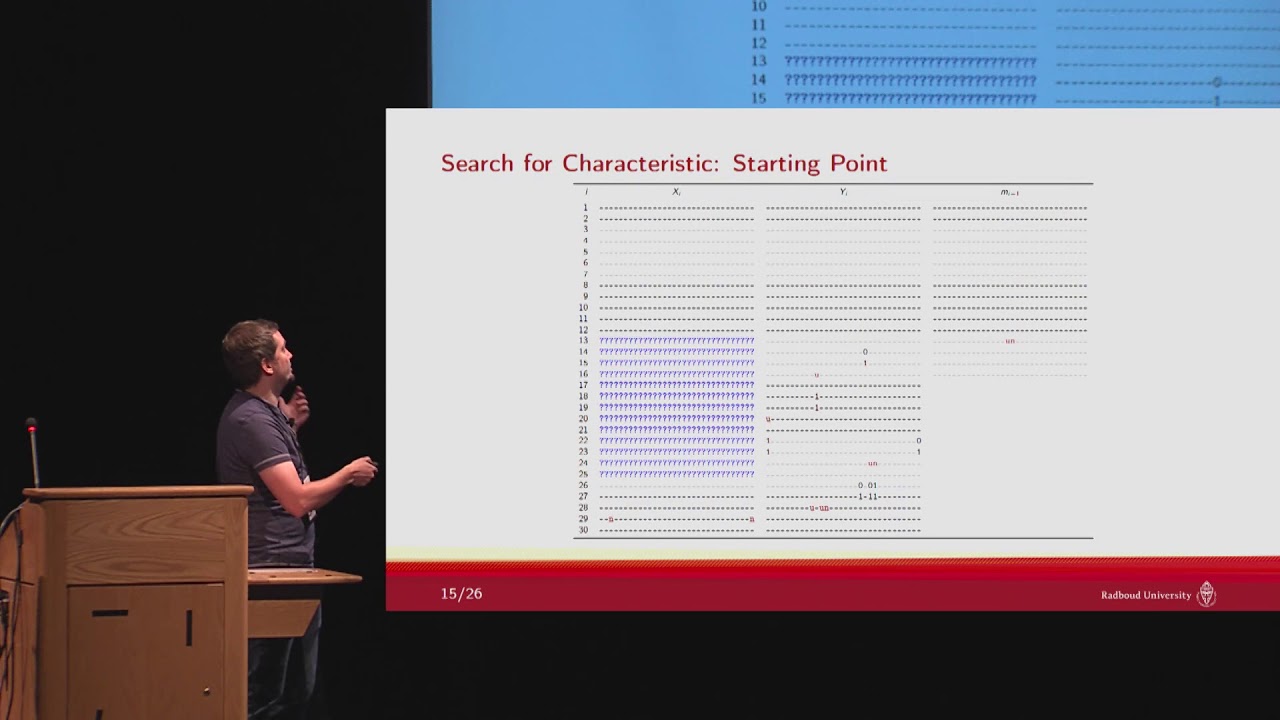Welcome to the resource topic for 2018/652
Title:
Efficient Collision Attack Frameworks for RIPEMD-160
Authors: Fukang Liu, Christoph Dobraunig, Florian Mendel, Takanori Isobe, Gaoli Wang, Zhenfu Cao
Abstract:RIPEMD-160 is an ISO/IEC standard and has been applied to generate the Bitcoin address with SHA-256. Due to the complex dual-stream structure, the first collision attack on reduced RIPEMD-160 presented by Liu, Mendel and Wang at Asiacrypt 2017 only reaches 30 steps, having a time complexity of 2^{70}. Apart from that, several semi-free-start collision attacks have been published for reduced RIPEMD-160 with the start-from-the-middle method. Inspired from such start-from-the middle structures, we propose two novel efficient collision attack frameworks for reduced RIPEMD-160 by making full use of the weakness of its message expansion. Those two frameworks are called dense-left-and-sparse-right (DLSR) framework and sparse-left-and-dense-right (SLDR) framework. As it turns out, the DLSR framework is more efficient than SLDR framework since one more step can be fully controlled, though with extra 2^{32} memory complexity. To construct the best differential characteristics for the DLSR framework, we carefully build the linearized part of the characteristics and then solve the corresponding nonlinear part using a guess-and-determine approach. Based on the newly discovered differential characteristics, we provide colliding messages pairs for the first practical collision attacks on 30 and 31 (out of 80) steps of RIPEMD-160 with time complexity 2^{35.9} and 2^{41.5} respectively. In addition, benefiting from the partial calculation, we can attack 33 and 34 (out of 80) steps of RIPEMD-160 with time complexity 2^{67.1} and 2^{74.3} respectively. When applying the SLDR framework to the differential characteristic used in the Asiacrypt 2017 paper, we significantly improve the time complexity by a factor of 2^{13}. However, it still cannot compete with the results obtained from the DLSR framework. To the best of our knowledge, these are the best collision attacks on reduced RIPEMD-160 with respect to the number of steps, including the first colliding message pairs for 30 and 31 steps of RIPEMD-160.
ePrint: https://eprint.iacr.org/2018/652
Talk: https://www.youtube.com/watch?v=3HKNGRaSIVw
See all topics related to this paper.
Feel free to post resources that are related to this paper below.
Example resources include: implementations, explanation materials, talks, slides, links to previous discussions on other websites.
For more information, see the rules for Resource Topics .
